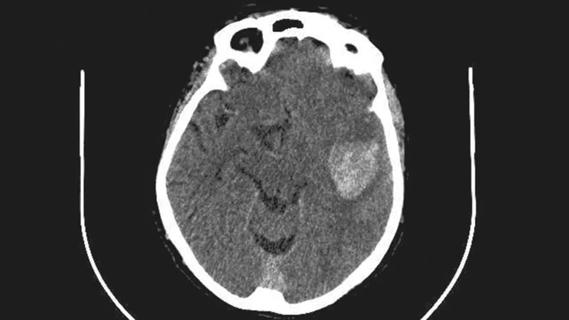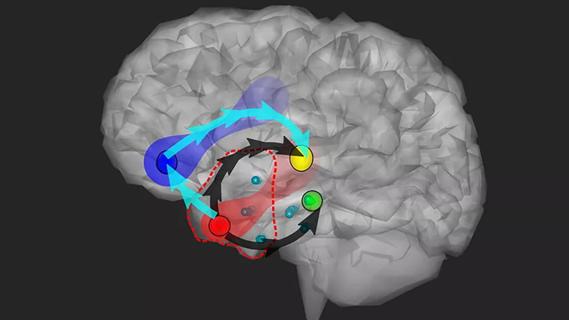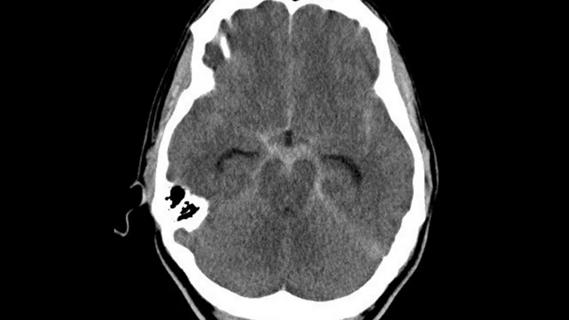Brexanolone injection may bring relief from postpartum depression within three days, though some questions remain

By Jonathan Emery, MD, and Lilian Gonsalves, MD
Cleveland Clinic is a non-profit academic medical center. Advertising on our site helps support our mission. We do not endorse non-Cleveland Clinic products or services. Policy
The first ever medication indicated to treat moderate to severe postpartum depression by helping regulate the hormone levels that drop after childbirth has received FDA approval.
Designated a breakthrough therapy, FDA gave the medication, brexanolone injection, priority review. This is particularly timely as Ob/Gyns implement the new recommendations from the American College of Obstetricians and Gynecologists (ACOG) for earlier, and more frequent, postpartum care.
Sold by Sage Therapeutics, brexanolone injection is the first pharmacological therapy specifically indicated for postpartum depression. The medication works quickly—within a few days according to three company-sponsored clinical trials. Specifically, clinical trials found brexanolone injection led to clinically meaningful reductions in the Hamilton Rating Scale for Depression (HAM-D) score at 60 hours compared to the placebo.
Brexanolone injection was approved with a Risk Evaluation and Mitigation Strategy, and will be administered by a healthcare professional in an in-patient setting via continuous intravenous infusion for 60 hours. The mechanism of action is different from that of other antidepressants. Chemically, brexanolone is identical to endogenous allopregnanolone, a hormone that decreases after childbirth. The new treatment works by activating a positive allosteric modulator of γ-aminobutyric-acid type A, otherwise known as the GABAA receptor.
In clinical trials, the most common treatment-associated adverse effects included headache, dizziness and somnolence. Adverse effects between the brexanolone injection groups and the placebo groups were similar; however, the incidence of dizziness and somnolence was higher in the brexanolone injection groups.
A fast-acting medication that relieves the symptoms of postpartum depression is great, especially when the typical antidepressant can take two to three weeks before patients start to see results. Ultimately, it is going to come down to patient selection, and it will be imperative that providers identify the women at highest risk of developing postpartum depression early, perhaps even toward the end of the third trimester. At Cleveland Clinic, we screen all pregnant women for postpartum depression during the initial prenatal intake visit, and we also screen women again for risk of depression in the late second or early third trimester.
While it is indeed encouraging to have a new medication to offer our patients, questions remain about length of stay in the hospital while receiving the infusion and how long the positive effects of the brexanolone injection will last. The latter will be critical for us to understand as the clinical trials (i.e., NCT02942004 and NCT02942017) did not follow up on participants after the 30-day trial period.
In the company-sponsored clinical trials, there were a handful of patients who became quite sedated. This is not entirely surprising given that brexanolone injection acts on GABAA receptors. Once we get a better handle on the potential side effects, and insurance payers cover some of the exorbitant costs, it may make sense to use this treatment regimen for women with treatment resistant, severe postpartum depression, prior use of electroconvulsive therapy and/or a strong desire to get better quickly. However, at this point, this discussion is theoretical as the long-term follow-up just is not there.
It is also incumbent upon us to figure out which patients are best served by the medication, and which patients may need to supplement the brexanolone injection with traditional selective serotonin reuptake inhibitors and/or cognitive behavioral therapy. While this new medication gives us another promising treatment option, we need to be sure to approach these treatments holistically.
Ten to 15 percent of women will experience significant postpartum depression, which can have adverse effects on the mother and infant. Postpartum depression can be quite disabling, and can impact some women more than others due to a variety of factors, including physical and mental exhaustion, a difficult or traumatic childbirth, lack of family support, hormonal changes and perhaps unfulfilled expectations of motherhood. Symptoms can include lethargy, hopelessness, feeling disconnected from infant and social supports, fluctuations in weight, difficulty sleeping and suicidal ideation. Clinical risk factors include a personal or family history of depression, history of physical or sexual abuse, having an unplanned pregnancy, current stressful life events, diabetes or complications with the pregnancy. Other factors influencing postpartum mood include low income, current or past immediate partner violence, a lack of social support or being young or a single parent.
Newer treatments, such as brexanolone injection, offer hope to patients who may be struggling with dangerous depression. It is imperative that we cut through the hype until more data become available, and also that we continue to screen and treat these women during such a vulnerable time.

Determining the right dose and injecting in the right muscle can be challenging

ENRICH trial marks a likely new era in ICH management

Study combines intracranial electrophysiology and SPECT to elucidate the role of hypoperfusion

New research sheds light on a potentially devastating condition that is reversible when properly managed

Testing options and therapies are expanding for this poorly understood sleep disorder

Real-world claims data and tissue culture studies set the stage for randomized clinical testing

Digital subtraction angiography remains central to assessment of ‘benign’ PMSAH

Cleveland Clinic neuromuscular specialist shares insights on AI in his field and beyond